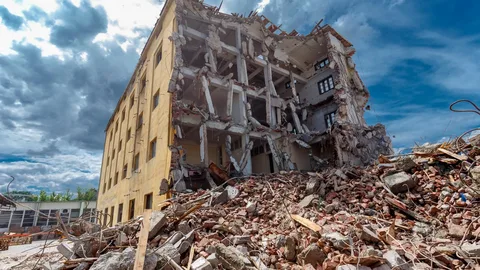Introduction
Among the many natural disasters that impact our planet, earthquakes remain one of the most sudden and destructive. Unlike storms or floods that can often be predicted, an earthquake strikes without warning, shaking the ground beneath us and leaving behind powerful consequences. Understanding what earthquakes are, why they happen, and how they affect human life is essential in building awareness and preparing for safety.
What is an Earthquake
An earthquake occurs when energy stored in the earth’s crust is suddenly released, causing the ground to shake. This release of energy usually happens along fault lines, where tectonic plates meet and shift against each other. The intensity of an earthquake can range from mild tremors that pass quickly to devastating quakes that damage cities, homes, and infrastructure.
Seismologists measure earthquakes using the Richter scale and the moment magnitude scale, both of which give an idea of how strong the shaking is. Small earthquakes often go unnoticed, but larger ones can change landscapes and affect millions of lives in just a few minutes.
Causes of Earthquakes
The earth’s outer shell is made up of tectonic plates that constantly move, although very slowly. When these plates collide, pull apart, or slide past each other, stress builds up along the boundaries. Once the stress becomes too great, it is released in the form of seismic waves, which we feel as an earthquake.
Other causes include volcanic activity, landslides, or even human activities such as mining and drilling. However, tectonic activity remains the most common and powerful source of earthquakes around the globe.
Impact on Human Life
The impact of an earthquake can be severe, depending on its strength and the location where it occurs. In highly populated areas, earthquakes can cause buildings to collapse, roads to break apart, and power and communication systems to fail. The immediate effects often include injuries, loss of lives, and widespread panic.
Beyond the physical destruction, earthquakes can leave long-term consequences. Communities may face economic hardship, displacement of families, and psychological trauma from the sudden disaster. Recovery often takes months or even years, as rebuilding requires significant resources and planning.
Earthquake-Prone Regions
Some regions of the world are more vulnerable to earthquakes due to their position along tectonic plate boundaries. The Pacific Ring of Fire, which includes countries like Japan, Indonesia, Chile, and parts of the United States, is one of the most active seismic zones. South Asia, with countries like Pakistan, India, and Nepal, also experiences frequent earthquakes because of the collision between the Indian and Eurasian plates.
Awareness of these regions helps governments and communities take preventive measures and prepare for future risks.
Safety Measures During an Earthquake
Since earthquakes cannot be predicted with precision, the best defense is preparation. Experts recommend several safety measures for individuals and families:
-
Drop, cover, and hold on during shaking to protect yourself from falling objects.
-
Stay away from windows, heavy furniture, or anything that may collapse.
-
If outdoors, move to an open area away from buildings and power lines.
-
Keep an emergency kit with food, water, medicines, and important documents ready.
-
Participate in community drills to understand how to respond quickly in emergencies.
Governments also play a role by enforcing building codes that make structures more resistant to shaking. Investments in early warning systems and disaster response planning are vital in minimizing damage and saving lives.
Recovery and Resilience
After an earthquake, recovery is often a long process. Communities must rebuild homes, schools, hospitals, and infrastructure while also addressing the emotional and social needs of the people. International aid, local support, and strong leadership play important roles in helping affected areas recover.
Resilience is built when societies learn from past earthquakes and prepare more effectively for future ones. This includes adopting earthquake-resistant construction methods, educating citizens, and improving emergency response systems.
Conclusion
Earthquakes are a reminder of the immense power of nature and the vulnerability of human life. While we cannot prevent them, understanding their causes, effects, and safety measures can reduce the risks they pose. By preparing at both individual and community levels, societies can face these challenges with greater resilience. The story of earthquakes is not just about destruction, but also about the strength of human determination to rebuild and recover.












Comments are closed